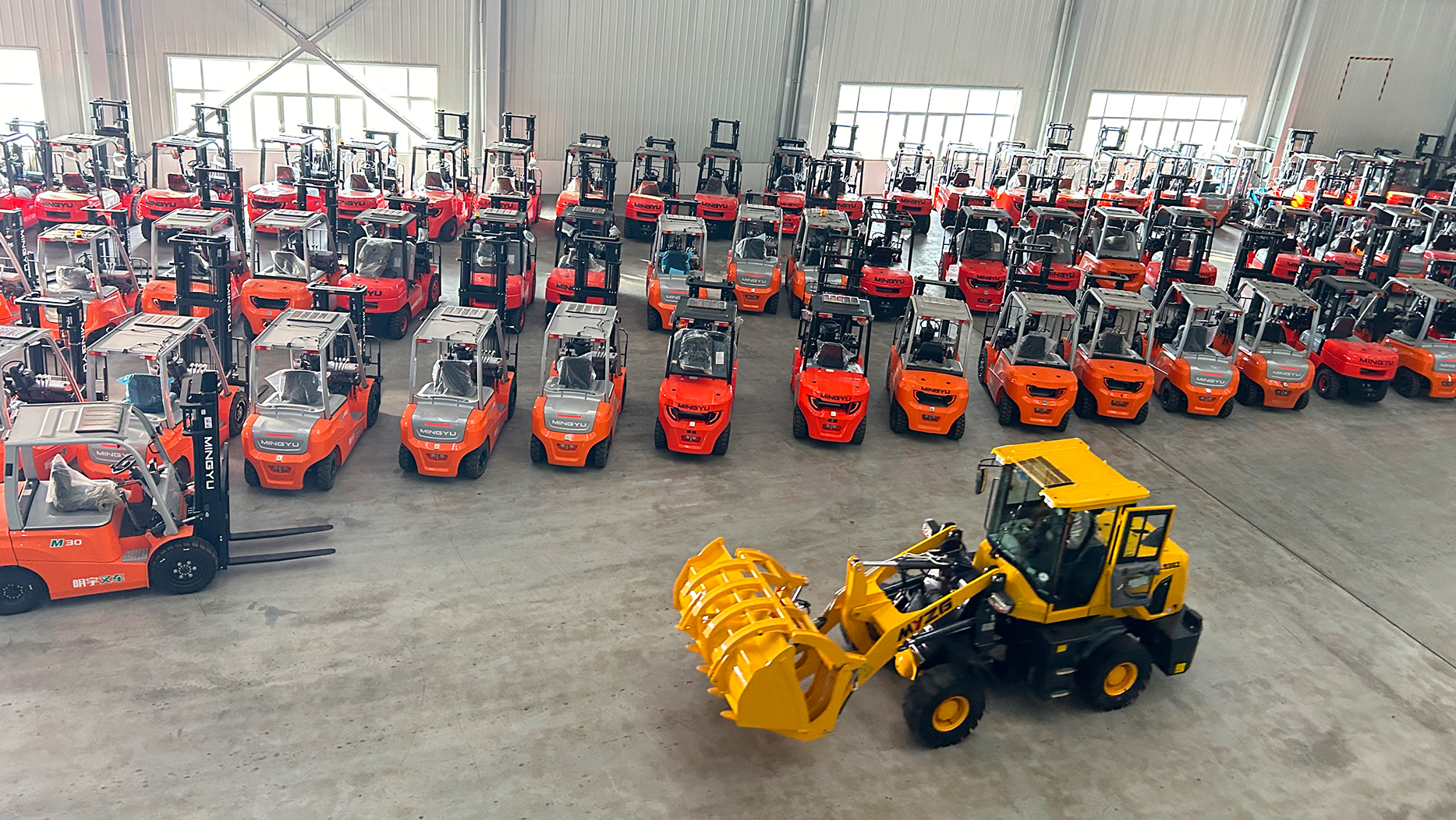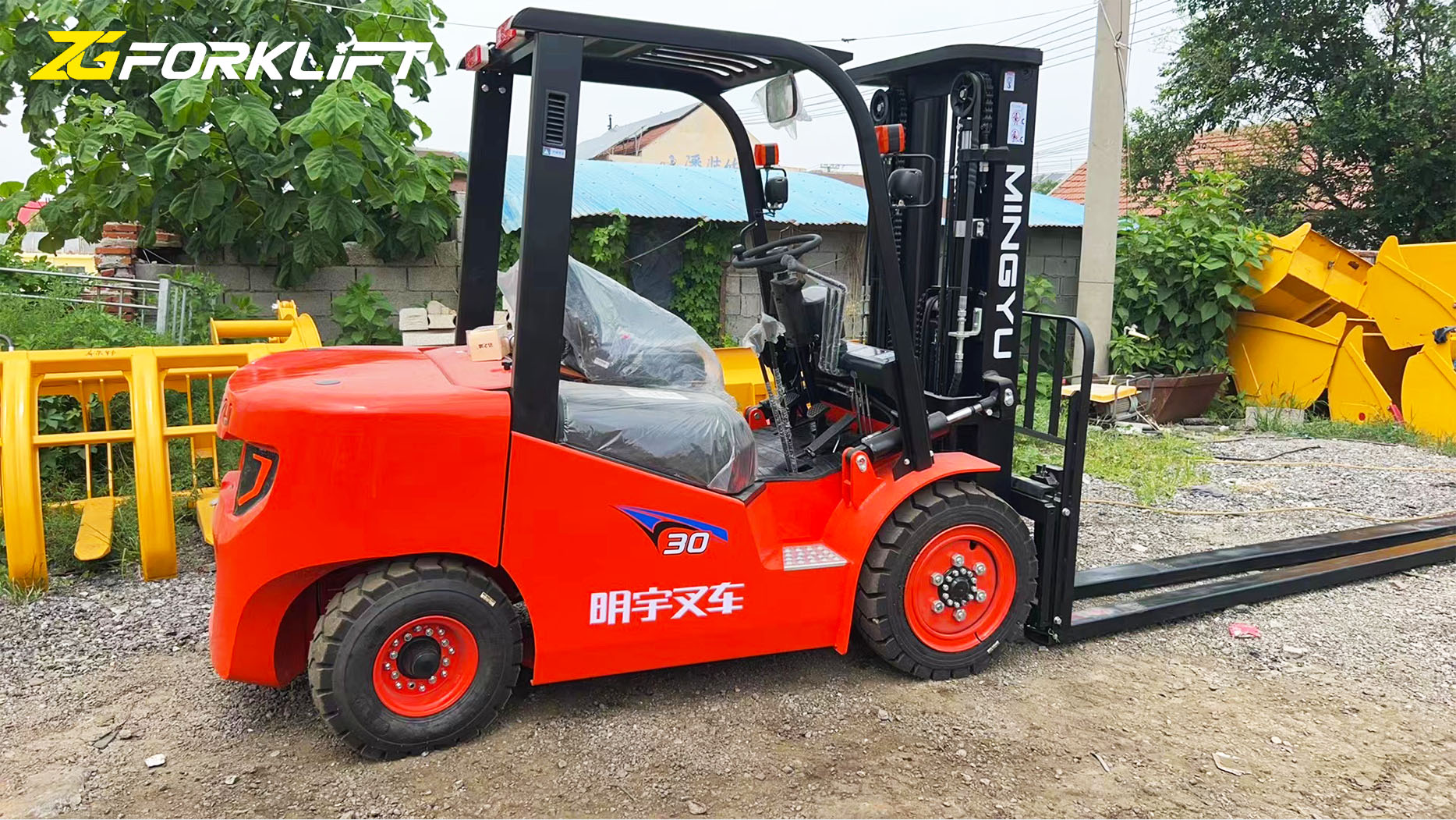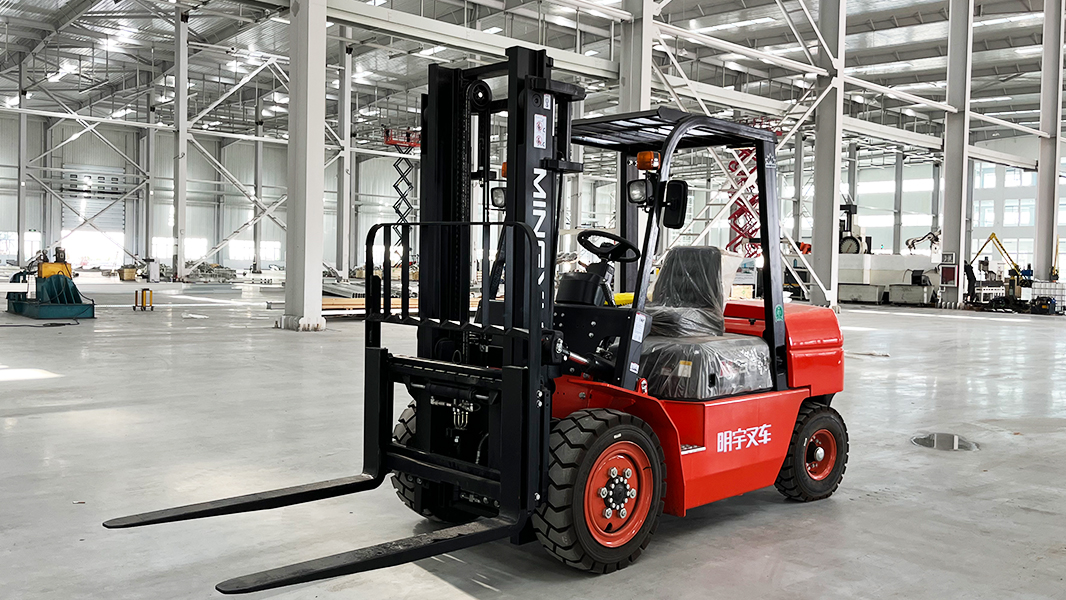1. Introduction
Forklifts are an essential part of material handling in various industries, providing the power needed to lift, transport, and stack heavy goods in warehouses, construction sites, ports, and more. Among the many types of forklifts, diesel-powered forklifts are a popular choice due to their strength, durability, and efficiency. These machines are particularly useful in environments where high lifting capacities and rugged terrain handling are essential. The diversity of diesel forklifts means that there are various models suited for different applications, each offering unique benefits tailored to specific operational needs.
In this article, we will explore the different types of diesel forklifts available, examining their capacities, designs, and ideal usage environments. By the end, you will have a clear understanding of the range of diesel forklifts and how to choose the best one for your business needs.
2. Overview of Diesel Forklifts
Diesel forklifts are internal combustion forklifts that are powered by diesel engines. These forklifts operate using the energy produced by the combustion of diesel fuel in their engine, which drives the wheels and powers the lifting mechanisms. Diesel forklifts are often preferred for outdoor, heavy-duty, or industrial tasks because they are capable of generating more power and operating for longer hours without the need for frequent recharging or battery changes, as compared to electric or LPG-powered forklifts.

One of the key advantages of diesel forklifts is their ability to perform in harsh environments where electric or gas-powered forklifts may struggle. Diesel engines are known for their durability, long operational life, and cost-effectiveness in heavy-duty applications. However, diesel forklifts do have drawbacks, including higher emissions and noise levels, which can limit their suitability for indoor use.
3. Types of Diesel Forklifts Based on Capacity
Diesel forklifts come in different sizes and capacities, making them versatile for a wide range of applications. The classification of diesel forklifts based on their capacity helps businesses select the right forklift for the job. There are three primary categories:
Light Duty Diesel Forklifts: These forklifts are designed to handle lighter loads, typically up to 3,000 pounds. They are often used in smaller warehouses or for light-duty tasks like material handling and stockpiling. Light duty diesel forklifts are great for environments where space is limited, but moderate lifting is still required.
Medium Duty Diesel Forklifts: With lifting capacities ranging from 3,000 to 6,000 pounds, these forklifts are the most common and versatile. They are ideal for mid-sized warehouses, manufacturing plants, and distribution centers, where medium-weight loads need to be handled efficiently. Their balance of power and size makes them suitable for a variety of industrial tasks.
Heavy Duty Diesel Forklifts: These forklifts are built to handle loads over 6,000 pounds, with some models capable of lifting up to 100,000 pounds or more. They are used in tough industries like construction, heavy manufacturing, and bulk material handling. Heavy-duty diesel forklifts are designed for maximum power, often with enhanced lifting capabilities and reinforced structures to handle extreme working conditions.
4. Types of Diesel Forklifts Based on Usage Environment
The environment in which the forklift will be used significantly impacts the choice of model. Diesel forklifts can be divided into different types based on their suitability for indoor or outdoor environments.
Indoor Diesel Forklifts: These forklifts are specifically designed for use in large indoor environments, such as warehouses and distribution centers. They are often equipped with features that make them more suitable for indoor operations, including emission control systems to reduce the release of harmful pollutants. These models tend to be quieter and more fuel-efficient than their outdoor counterparts, though they still produce emissions that must be managed with proper ventilation.

Outdoor Diesel Forklifts: Built to withstand the elements, outdoor diesel forklifts are ideal for tough, rugged environments like construction sites, lumberyards, and docks. These forklifts are designed with durable tires and robust engines to handle rough terrain, adverse weather conditions, and long working hours without compromising performance.
All-terrain Diesel Forklifts: As the name suggests, these forklifts are built for uneven or challenging ground surfaces. They are equipped with larger tires, higher ground clearance, and enhanced suspension systems to provide stability and maneuverability on rough terrain. They are commonly used in industries like agriculture, forestry, and construction where conventional forklifts would struggle to operate effectively.
5. Different Types of Diesel Forklifts Based on Mast Design
The mast design of a forklift plays a crucial role in its lifting capabilities and operational efficiency. Diesel forklifts come with various mast designs, each suited for specific tasks:
Standard Mast Diesel Forklifts: These are the most common type of forklift, featuring a simple vertical mast that can raise and lower loads to a moderate height. These forklifts are widely used in warehouses and distribution centers for stacking and retrieving goods.
Reach Mast Diesel Forklifts: Designed for higher lifting heights and extended reach, reach mast forklifts are suitable for environments that require the lifting of goods at greater heights. They are ideal for pallet racking systems where the forklift operator needs to reach higher storage levels.
Telescopic Diesel Forklifts: Telescopic forklifts, also known as telehandlers, are equipped with extendable masts that allow them to reach exceptional heights. These forklifts are especially useful in construction and agricultural settings where high lift capabilities are essential, and they can often be used to place materials in hard-to-reach areas.
6. Specialized Diesel Forklifts
Some diesel forklifts are designed for specialized applications, addressing specific needs in industries that require unique features.

Rough Terrain Diesel Forklifts: Built for outdoor use in harsh environments with uneven surfaces, rough terrain forklifts feature large tires and a high ground clearance. These forklifts are used on construction sites, mining operations, and logging yards, where traditional forklifts would not be able to navigate.
Side Loader Diesel Forklifts: Side loaders are specifically designed to handle long loads, such as steel beams, pipes, and timber. These forklifts have a unique design with the mast positioned to the side, allowing the operator to handle long materials more easily and efficiently in tight spaces.
4-Wheel Drive Diesel Forklifts: These forklifts are equipped with four-wheel drive systems, which provide superior traction and stability on rough and slippery surfaces. They are ideal for outdoor operations, especially in construction and forestry, where heavy lifting and terrain challenges are common.
7. Key Features and Benefits of Diesel Forklifts
Diesel forklifts are known for their power and efficiency, making them the ideal choice for many industrial applications. Some of the key benefits include:
Durability and Longevity: Diesel engines are known for their reliability, providing a long operational life, even under tough conditions.
Fuel Efficiency: Diesel fuel offers better fuel efficiency compared to gasoline, making diesel forklifts a more cost-effective option for heavy-duty lifting and long-duration operations.
High Lifting Capacity: Diesel forklifts typically have higher lifting capacities than electric or LPG models, making them ideal for handling heavy loads in large industrial environments.
Outdoor Performance: Diesel forklifts excel in outdoor environments, where their robust engines and durable construction allow them to operate in harsh conditions.
8. Safety Considerations for Diesel Forklifts
Safety is critical when operating any type of forklift, and diesel forklifts are no exception. Some key safety considerations include:
Emissions and Ventilation: Diesel forklifts produce exhaust gases that need to be carefully managed, especially in indoor environments. Proper ventilation systems must be in place to ensure that workers are not exposed to harmful pollutants like carbon monoxide.
Noise Levels: Diesel engines are typically louder than electric motors, so noise reduction measures, such as hearing protection and quieter engine technologies, are necessary for operator comfort and safety.
Maintenance and Inspections: Regular maintenance and safety inspections are required to ensure that diesel forklifts remain in good working condition and comply with safety standards. This includes checking emissions systems, brakes, tires, and lifting components.
9. Market Trends and Innovations in Diesel Forklifts
The diesel forklift market continues to evolve, driven by advances in fuel efficiency, emission control technologies, and evolving industry demands. Manufacturers are developing more eco-friendly models, incorporating technologies like hybrid engines and better fuel management systems. In addition, there is growing interest in automated and autonomous diesel forklifts, which can improve operational efficiency and safety in warehouses and distribution centers.
10. Conclusion
Diesel forklifts continue to be a key player in the material handling industry, offering a wide range of models designed for different lifting capacities, environmental conditions, and applications. From light-duty to heavy-duty models, and from standard to specialized designs, there is a diesel forklift suited for virtually every industrial need. While electric and LPG forklifts are gaining popularity, diesel forklifts remain an essential part of the construction, manufacturing, and warehousing sectors due to their power, durability, and cost-effectiveness. When choosing the right diesel forklift for your business, it’s essential to consider the environment, load capacity, and specific needs to ensure optimal performance and efficiency.
Post time:Apr.21.2025
